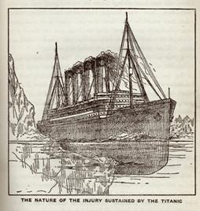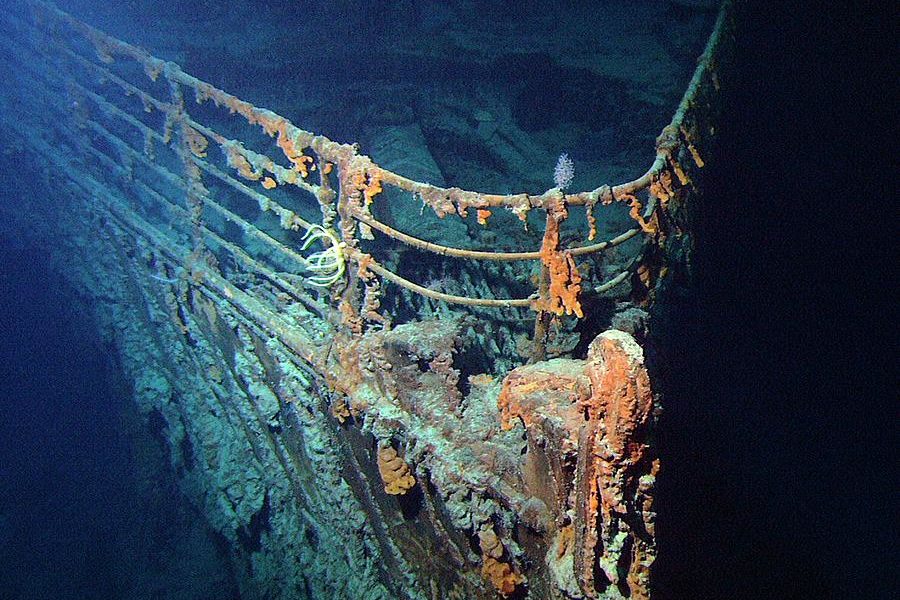As we approach the 110th anniversary of the sinking of the Titanic (the night of 14th – 15th April 1912), more thought should be made to consider the protection and underwater cultural heritage of the wreck that now sits deep in the Atlantic. Underwater cultural heritage refers to marine sites that are historically or culturally significant including tangible (historical artifacts) and intangible (cultural value) features of those sites, such as historic artifacts or reefs that are culturally significant to local communities. In the case of the Titanic, the wreck site is historically significant as well as culturally significant due to the site’s legacy as the world’s most famous shipwreck. Moreover, the wreck has acted as a catalyst for legislation and international agreements that govern international maritime law today Such as the Safety of Life at Sea Convention, the establishment of the International Maritime Organization, and the protection of underwater cultural heritage). Since its discovery, debate has continued over how to best preserve this iconic wreck for present and future generations.
How should Titanic be Preserved?
As a unique underwater cultural heritage site, the Titanic’s protection is up for debate. To date, some 5,000 artifacts have been salvaged from the wreck site and have been conserved in an intact collection much of which is available at museums or institutions of public access. More importantly, approximately 95% of the Titanic is being preserved in Situ as a maritime memorial. In Situ – literally in the original place – is the process in which an underwater cultural heritage site is left undisturbed for long-term preservation and to minimize harm to the site.
Whether the Titanic is preserved in situ or undergoes conservation efforts to allow for limited collections to encourage public access, the wreck must be protected from those hoping to exploit the wreck. The idea of scientific salvage presented above is in direct opposition to so-called treasure hunters. Treasure hunters do not use scientific methods of artifact recovery often in pursuit of monetary gain or fame. This type of exploitation must be avoided at all costs due to the significant damage to the underwater cultural heritage sites and harm to the surrounding marine ecosystem.
What Laws Protect Titanic?
Since the wreck site of the Titanic was discovered in 1985, it has been the center of debate regarding site preservation. Currently, international agreements and domestic laws have been put in place to limit the collection of artifacts from the Titanic and preserve the wreck in situ.
As of 2021, the Titanic is protected under the US-UK International Agreement on Titanic, the UNESCO 2001 Convention on the Protection of Underwater Cultural Heritage, and the Law of the Sea. Together these international agreements support international cooperation for the protection and uphold the idea that the international community has a duty to protect historic wrecks, including the Titanic.
There are also domestic laws protecting the wreck. In the United Kingdom, the Titanic is protected through The Protection of Wrecks (RMS Titanic) Order 2003. Within the United States, the efforts to protect the Titanic started with the R.M.S. Titanic Maritime Memorial Act of 1986, which called for the international agreement and the NOAA guidelines published in 2001, and Section 113 of the Consolidated Appropriations Act, 2017. The 2017 Act states that “no person shall conduct any research, exploration, salvage, or other activity that would physically alter or disturb the wreck or wreck site of the RMS Titanic unless authorized by the Secretary of Commerce.”

(NOAA Photo Library.)
Historic Controversy Over Salvage Rights to the Titanic and its Artifacts
While Admiralty courts orders (maritime courts) protect the public interest in Titanic through the maritime law of salvage (see above section), the protection and limitations on collecting salvage were not always assured. In the legislative history of the 1986 Act, there was testimony from discoverer Bob Ballard – who discovered the Titanic – as to how the Titanic should be preserved in place (in situ) as a maritime memorial to those who lost their lives that fateful night. However, during his testimony, Ballard noted that there were some artifacts in the debris field between the two large hull portions that may be appropriate for proper recovery and conservation in a collection available to the public. George Tulloch of Titanic Ventures (later RMS Titanic Inc. or RMST) incorporated this suggestion into his salvage plan executed with the co-discoverers in the French Institute IFREMIR on the condition that the artifacts would be kept together as an intact collection. Tulloch then promised to help RMST obtain rights to salvage Titanic in the Eastern District of Virginia in 1994. A subsequent court order prohibiting piercing of the hull portions to salvage artifacts was incorporated into the Agreement on the Titanic to stop the penetration of the wreck and the collection of salvage from inside the Titanic’s hull.
In 2000, RMST was subject to a hostile takeover by some shareholders who wanted to conduct salvage inside the hull portions and sued the US Government to prevent it from signing the international Agreement on Titanic (see paragraph two). The suit was dismissed, and the court issued another order reminding RMST that it is prohibited from piercing the hull and salvaging artifacts. RMST’s efforts to maximize its interest in monetizing their salvage unsuccessfully sought title under the law of finds but were able to obtain an award of the collection of artifacts subject to certain covenants and conditions to reflect the public interest in Titanic.
After RMST abandoned efforts to auction all or part of the collection of Titanic artifacts, it returned to the plan of piercing the hull to salvage the radio (called the Marconi equipment) that sent the distress signal that fateful night. While it initially convinced the Eastern District of Virginia to carve an exception to its 2000 order to authorize it to “minimally . . . cut into the wreck only as necessary to access the Marconi Suite, and to detach from the wreck the Marconi wireless device and associated artifacts” the 4th Circuit Court of Appeals overturned the order. In doing so, it recognized the lower court’s authority to issue such an order in the future but only after considering the US Government’s arguments that the 2017 Act requires an authorization from the Deptpartment of Commerce NOAA consistent with the International Agreement on Titanic.
In the end, the court upheld the notion that while there may be some interest in the public in recovering artifacts from the portion of the hull, any mission must undergo a process that would involve the executive branches of both the United Kingdom and United, and must respect and interpret the laws of Congress and the treaties to which it is a party. Thus, the Titanic shipwreck will remain protected in situ as no person or organization can alter or disturb the Titanic shipwreck unless given specific permission from the both US and UK governments.
As we again near the anniversary of the sinking of perhaps the world’s most famous shipwreck, it brings to light the need for the continued protection of our ocean heritage including underwater cultural heritage. For additional information on the Titanic, the National Oceanic and Atmospheric Administration (NOAA) maintains web pages on the Agreement, Guidelines, Authorization process, Salvage, and legislation related to the Titanic in the United States. For more information about the law and litigation regarding Titanic see the Advisory Council on Underwater Archaeology Deep Thoughts.







